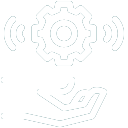Duration 5 Days
Introduction
A distributed control system (DCS) refers to a control system usually of a manufacturing system, process or any kind of dynamic system, in which the controller elements are not central in location (like the brain) but are distributed throughout the system with each component sub-system controlled by one or more controllers. The entire system of controllers is connected by networks for communication and monitoring. DCS is a very broad term used in a variety of industries, to monitor and control distributed equipment
Who Should Attend
It is aimed at the Instrument Engineer/Technician and the Automation Engineer/Technician
Technical/Mechanical/Electrical Engineering/Technician
OBJECTIVES
To improve the understanding of what DCS is and it's application in automation systems Participants: instrumentation engineer & high qualified technicians in instrumentation field and process engineer
Course outlines:
- Introduction and Overview
- Aims of Plant Automation
- Classical Approach of Plant Automation
- Computer-Based Plant Automation
- Distributed Computer Control
- System Architecture:
- Evaluation of Hierarchical System Structure
- Functional Levels
- Data Base organization
- System Elements
- Field Stations
- Intermediate Stations
- Central Computer Stations
- Data Communication Links:
- Transfer of Process data
- Communication Within the System
- Local Area Network
- Open System Interconnection of ISO
- IEEE project 802, on Local Area Network
- MAO-Manufacturing Automation protocol
- System Engineering & Design:
- Point count
- Rack layout
- Field terminal assignments
- Control panel interface
- Grounding & shielding
- Field wiring interface
- Signal power & communing requirements
- Data highway communications
- Operator console design
- Logic & sequencing requirements
- Backup systems
- Special control systems
- Communications with other computers
- Ventilation & airconditioning in the control room
- Architectural considerations
- Software Configuration:
5-1 Programming
- process information
- control algorithms
- operator interface instructions
5-2 Data Base Generation
- Software for data acquisition (blank)
- Process control
- Alarming
- Operator display
- Identification of process & control information for each point
- Filling forms from
- P&I diagrams
- Instrument specification sheets
- Instrument indexes
- Field terminal drawings
- Coding
- Keypunching
- Loading
- Debugging
5.3 Displays (CRT Console)
- Plant overview
- Group & detailed formats
- Display assignments
- Graphic display capabilities
- Plant flow diagram
- Schematics
- One line diagrams
- Customized displays
5.4 Reports:
- Formal & prints
- Process data
- Alarms
- Software configuration
- System diagnostics
- Storing historical data on selected points
- Generating reports on periodic & a demand basis
- Equipment inspection
- System functional test
- Correcting deficiencies
- Back-up schemes for DCS such as:
- Back-up computer
- Analog controllers
- Manual loading stations
- Various combinations of these
- DCS software selection & evaluation
- The operating system
- Memory management
- File management
- Utility programs
- Language translators
- Process control software
- User-written programs
- Explanation of DCS Advantages:
- Cost reduction
- Smaller space panel
- Improved operator / process interface
- Configuration from the keyboard
- More confidence in values
- No mainframe programming
- High availability & reliability
- Short time for repair
- Ease of failure diagnostic
- Power Generation Plant DCS:
- Fuel control and optimization
- Boiler regulatory control
- Steam generation optimization
- Turbines control
- Generator control
- Optimal level of power generation
- Economic load dispatch
- Condenser pressure optimization
- Optimal speed control for drivers
- Optimal unit commitment
- Rlectric load control
- Emergency load shedding
- Energy management simulator (what if analysis)
- Typical DCS commercially available:
- Honeywell TDC 2000,TDC 3000
- ABB
- SIMCON
- Rsemount
- Hartmann & Braun
 العربية
العربية





